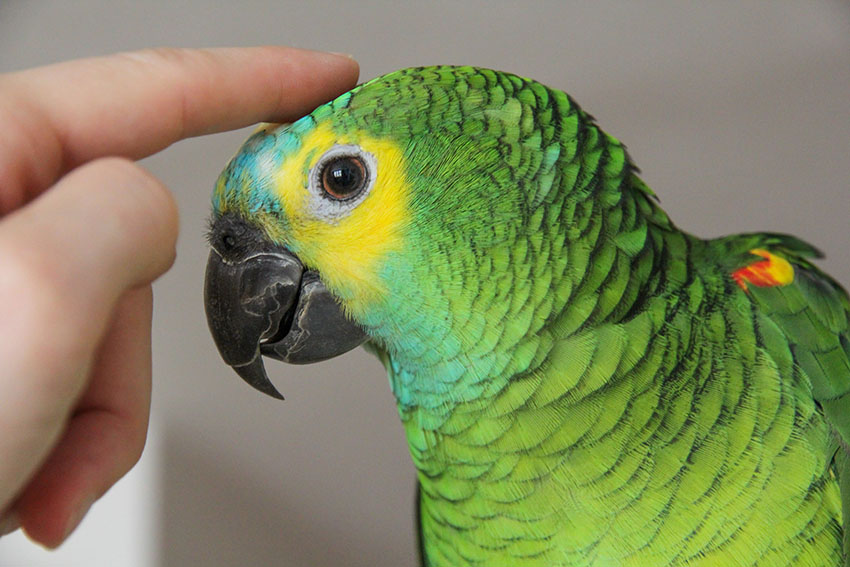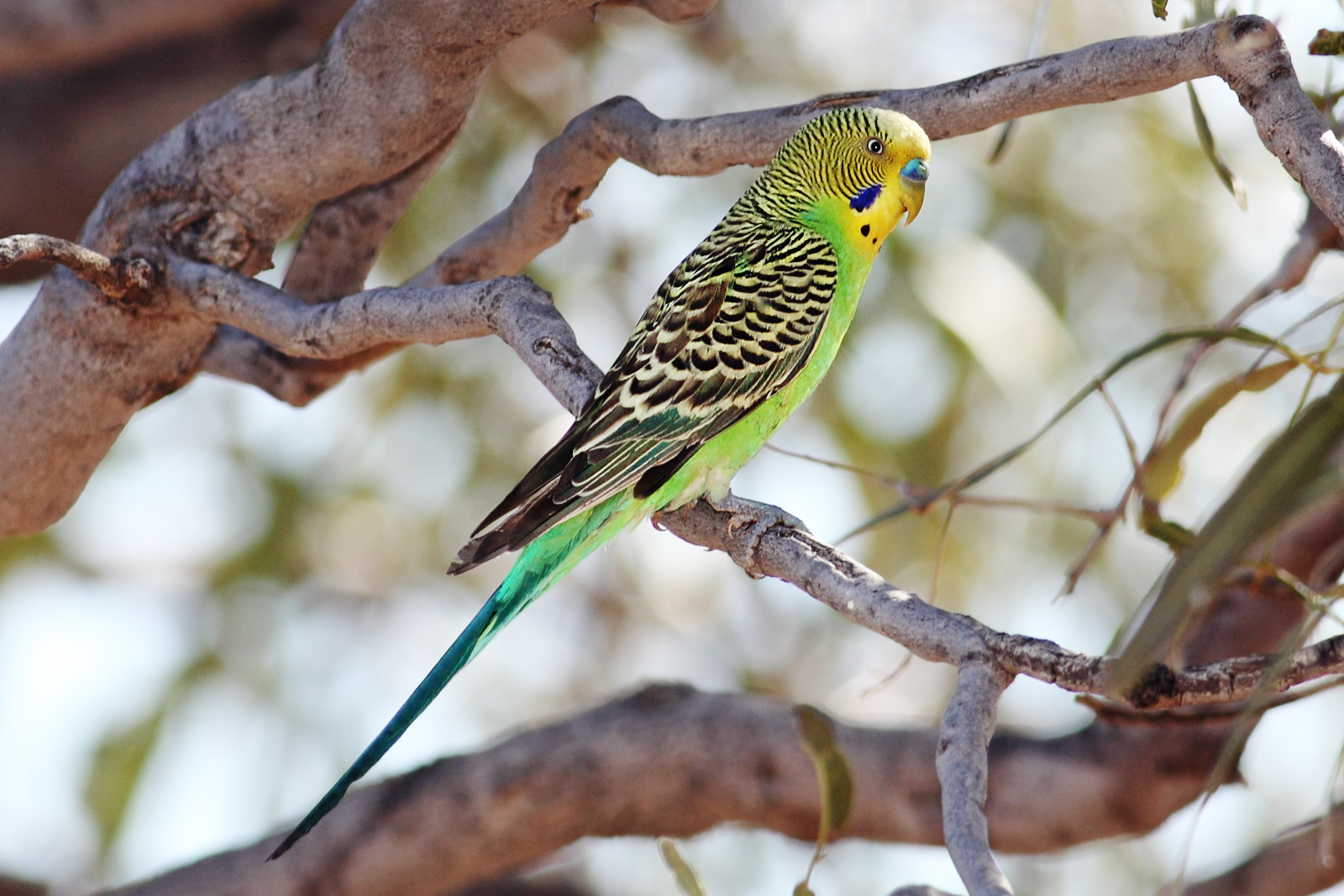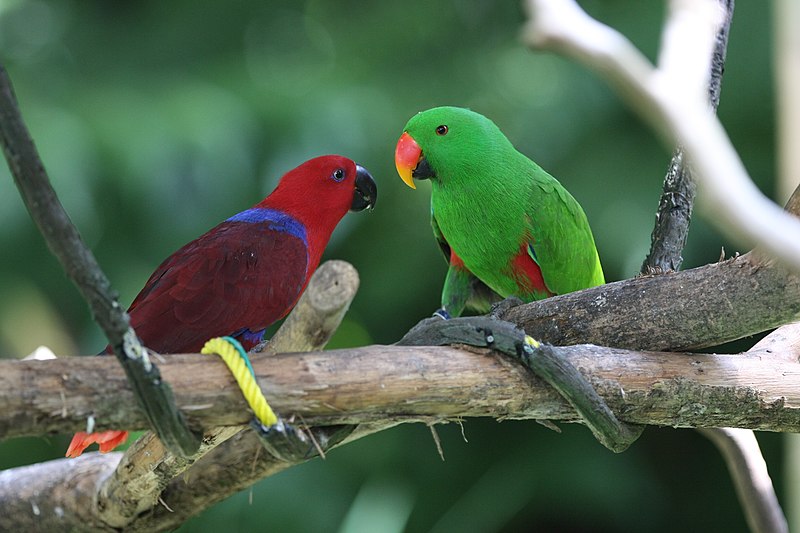Talking birds are among the most sought-after avian pets. These birds are popular because they are able to mimic human speech or perform a trick, which inspires many people to acquire a bird of their own. Some species have a greater capacity for speech than others, though no bird will learn to talk unless they can spend lots of quality time interacting with their humans and listening to repeated words and phrases.
If you’re hoping to train a feathered friend to mimic your voice, here are the top 8 talking birds in the world. These birds are known for their clear and articulate speech, ability to mimic different voices and sounds, and large vocabulary.
You are reading: Top 8 Talking Birds in The World

Top 8 Talking Birds in The World
African Grey Parrot
The African Grey Parrot is a medium-sized parrot species that is known for its ability to talk and mimic sounds, making it a captivating companion.
African Grey owners often report that their birds talk in context and seem very attuned to their people’s emotions. This species is also known for its extreme intelligence, which has earned them the nickname “The Einsteins of the Bird World”.
African Greys are particularly good at imitating human words and sounds, and they are considered the best medium-sized parrot for talking. Most African Greys can talk, and they can repeat words and phrases after hearing them twice.
However, they need to be trained to have a more expansive vocabulary. In this article, we will explore the African Grey Parrot’s talking abilities, how to encourage them to speak, and other interesting facts about this intelligent bird species.
Amazon Parrot
Amazon parrots are known for their excellent talking abilities, having an average of 100 to 120 words in their vocabulary. They are chatty and when appropriately trained, they can speak words and phrases and imitate sounds. Amazon parrots enjoy listening to music and would sing even if they are off-key.
Yellow-Naped Amazon is the most popular Amazon species for talking abilities, known for developing very large vocabularies and being able to combine words into clear sentences.
Blue-fronted Amazon is also an excellent talker, saying both words and phrases in a human-like voice tone.
Red-Lored Amazon Parrot is a species of Amazon parrot that is native to Mexico and Central America and is known for its talking abilities.
It’s important to note that not all parrots can talk, and while most parrots have the ability to talk, some parrots will never speak a word. Good nutrition, including lots of fruit and vegetables, and lots of playtime and exercise will keep your Amazon in good shape for a long time.
Budgerigar

Budgerigars, also known as parakeets or “budgies,” are small, long-tailed, seed-eating parrots that are native to Australia. They are the only species in the genus Melopsittacus and are popular pets around the world due to their small size, low cost, and ability to mimic human speech.
In fact, budgies are likely the third most popular pet in the world, after dogs and cats. Budgies are nomadic flock parakeets that have been bred in captivity since the 19th century. They are found in open habitats, primarily in scrublands, open woodlands, and grasslands of Australia.
Budgerigars are normally found in small flocks, but can form very large flocks under favorable conditions. The nomadic movement of the flocks is tied to the availability of food and water.
Budgerigars have two distinct flight speeds which they are capable of switching between depending on the circumstance. Budgies are known for their excellent talking abilities and have even broken world records for the largest bird vocabulary. They can learn long phrases and sentences and can mimic human speech.
However, not all budgies can talk, and while most budgies have the ability to talk, some budgies will never speak a word. In this article, we will explore more about budgerigars, their talking abilities, and other interesting facts about this charming bird species.
Eclectus Parrot

Eclectus parrots are medium-sized parrots that are native to regions of Oceania, particularly New Guinea and Australia. They are known for their extreme sexual dimorphism, meaning that males and females have different colors of plumage. The male eclectus is mostly bright green with blue primaries, while the female is predominantly bright red or purple.
Eclectus parrots have a big head and a short tail, and their feathers have a fur-like appearance. They are generally calm and friendly birds, described as gentle, tranquil, and caring. Eclectus parrots are also affectionate and enjoy spending time with their owners.
However, they are prone to feather destruction in captivity, which involves picking, pulling, cutting, and/or barbing their feathers.
The subspecies E. r. vosmaeri is the most commonly kept in captivity. In this article, we will explore more about Eclectus parrots, their characteristics, care, and interesting facts about this unique bird species.
Some key points about Eclectus parrots:
– They are medium-sized parrots native to regions of Oceania, particularly New Guinea and Australia.
– Males are mostly bright green with blue primaries, while females are predominantly bright red or purple.
– They have a big head and a short tail, and their feathers have a fur-like appearance.
– They are generally calm and friendly birds, described as gentle, tranquil, and caring.
– They are prone to feather destruction in captivity.
– The subspecies E. r. vosmaeri is the most commonly kept in captivity.
Hill Myna
The common hill myna (Gracula religiosa) is a member of the starling family and is native to hill regions of South Asia and Southeast Asia. It is a popular cage bird, renowned for its ability to imitate speech.
The common hill myna is often detected by its loud, shrill, descending whistles followed by other calls, and it is most vocal at dawn and dusk when it is found in small groups in forest clearings high in the canopy.
The southern hill myna (Gracula indica) is another species of hill myna that is a resident of the forested regions of south India and Sri Lanka.
Like other species of hill myna, the southern hill myna has yellow wattles on the head and is considered one of the best talking birds, often imitating human sounds and voice better than other parrots.
The common hill myna and southern hill myna are both glossy black with bright yellow head wattles and bright orange bills. The common hill myna is the myna most commonly sighted in aviculture, where it is often simply referred to as the hill myna or myna bird.
Demand outstrips captive breeding capacity, so they are rarely found in pet stores and usually purchased from breeders. In this article, we will explore more about the common hill myna and southern hill myna, their characteristics, care, and interesting facts about these unique bird species.
Some key points about Hill Mynas:
– The common hill myna (Gracula religiosa) is a member of the starling family and is native to hill regions of South Asia and Southeast Asia.
– The southern hill myna (Gracula indica) is another species of hill myna that is a resident of the forested regions of south India and Sri Lanka.
– Both species of hill myna have yellow wattles on the head and are considered one of the best talking birds, often imitating human sounds and voice better than other parrots.
– The common hill myna and southern hill myna are both glossy black with bright yellow head wattles and bright orange bills.
– The common hill myna is the myna most commonly sighted in aviculture, where it is often simply referred to as the hill myna or myna bird.
– Demand outstrips captive breeding capacity, so they are rarely found in pet stores and usually purchased from breeders.
Indian Ringneck Parakeet
The Indian Ringneck Parakeet, also known as the Rose-ringed Parakeet, is a medium-sized parrot in the genus Psittacula, of the family Psittacidae. Here are some key points about Indian Ringneck Parakeets:
Appearance:
– The Indian Ringneck Parakeet is sexually dimorphic, with the adult male sporting a red and black neck.
Personality:
– The Indian Ringneck Parakeet is not a shy bird and does best with an owner who appreciates an outgoing companion that is not afraid to demand what it wants.
– They are very social birds and are used to having company, often traveling in flocks of 100 or more birds.
Care:
– The Indian Ringneck Parakeet requires a lot of attention and care, but with adequate attention, handling, and love, it can quickly become a beloved companion and family member.
– They enjoy learning new things and are exceptionally proficient with owners who want to challenge their intelligence.
Lifespan:
– Indian Ringneck Parakeets can live up to 25-30 years when cared for properly.
Availability:
– Indian Ringneck Parakeets are popular pets and can be found in many parts of the world, including Australia, Great Britain, the United States, and other Western countries.
It’s important to note that while Indian Ringneck Parakeets are known for their talking abilities, not all individuals will learn to talk, and some may only learn a few words or phrases.
Quaker Parrot
Quaker parrots, also known as Monk parakeets, are small and colorful parrots with charming and comical personalities. Here are some key points about Quaker parrots:
– Temperament: Quakers are confident, social, and outgoing birds, often described as little clowns. They have the personality of large birds in a small bird’s body and are known for their entertaining behavior.
– Talking Ability: Quaker parrots are exceptional talkers and can learn to mimic human speech with proper training and socialization. They are bold and outgoing, often chattering and interacting with their owners.
– Appearance: Adult Quaker parrots have a vivid green color on their head, wings, and back, with a gray breast, cheeks, and throat. Their most distinguishing feature is their gray coloration, which resembles Colonial-era Quaker clothing and is how they got their name. They also have gorgeous blue flight feathers and a lighter green tinge on the underside of their tails.
– Intelligence and Playfulness: Quaker parrots are highly intelligent birds that require mental stimulation and plenty of toys to keep them entertained. They are known for their problem-solving skills and can be trained to perform various tricks and tasks.
Read more : Discover The 8 Types Of Hawks In Kentucky
– Nesting Behavior: Quaker parrots are unique among parrots as they are the only species that builds its nest instead of nesting in tree holes. Their twig-built nests can be quite massive and are a fascinating aspect of their natural behavior.
– Social Needs: Quaker parrots are very social animals and always want to be the life of the party. They enjoy interacting with their owners and can become stressed or develop behavioral issues if they are not given enough attention and socialization.
Quaker parrots make excellent pets for bird lovers who are looking for a small, intelligent, and entertaining companion. However, potential owners should be prepared to provide them with the attention, mental stimulation, and social interaction they need to thrive.
Yellow-Crowned Amazon
The Yellow-Crowned Amazon, also known as the Yellow-Crowned Parrot, is a species of parrot native to tropical South America, Panama, and Trinidad and Tobago in the Caribbean. Here are some key points about the Yellow-Crowned Amazon:
– Appearance: The Yellow-Crowned Amazon is a medium-sized parrot with mostly green plumage and rainbow markings over its body. As its name suggests, it has a deep yellow crown, occasionally dotted with some red or orange feathers, and a white ring around its eye. Its wings have red patches on the secondaries and shoulders, and its legs are light gray.
– Habitat: Yellow-Crowned Amazons are found in the Amazon basin and Guianas, with additional populations in northwestern South America and Panama. They are birds of tropical forests (both humid and dry), woodlands, mangroves, and savannas and may also be found on cultivated land and suburban areas.
– Behavior: Yellow-Crowned Amazons are normally found in pairs or small flocks of up to 30 birds, but larger groups may gather at clay licks. They are fond of maize and their food includes fruits, nuts, seeds, berries, blossoms, and leaf buds.
– Talking Ability: Yellow-Crowned Amazons are known for their excellent speech abilities and playful antics. However, talking ability will vary depending on the individual bird.
– Availability: Yellow-Crowned Amazons are popular pets and can be found in many parts of the world, including the United States. They are scientifically known as Amazona ochrocephala and are affectionate birds that require proper care and attention.
Overall, the Yellow-Crowned Amazon is a beautiful and intelligent bird species that makes a great pet for bird lovers who are willing to provide them with the care and attention they need to thrive.
FAQS
1. What makes a bird a good talker?
Some bird species have a greater capacity for speech than others, but no bird will learn to talk unless they can spend lots of quality time interacting with their humans and listening to repeated words and phrases.
2. Can talking birds understand what they are saying?
There is debate within the scientific community over whether some talking parrots also have some cognitive understanding of the language. While some birds, like the African Grey, can use words in context to have simple conversations, it doesn’t necessarily mean they fully understand what they are saying.
3. Which bird is the best talker?
The African Grey is often regarded as the best talking bird, with some individuals amassing vocabularies of hundreds of words. They can use their cognitive and communicative abilities in ways similar to young children, such as speaking foreign languages, counting, telling jokes, and laughing.
4. Which bird has the largest vocabulary?
Budgerigars, also known as parakeets, have been observed to have a vocabulary of almost 2,000 words. In 1995, a budgerigar named Puck was credited by Guinness World Records as having the largest vocabulary of any bird, at 1,728 words.
5. Can small birds talk as well as larger birds?
While larger birds like the African Grey are often considered the best talkers, smaller birds like budgerigars (parakeets) can also be excellent talkers. In fact, budgies have broken world records for their talking abilities.
6. How long does it take to train a bird to talk?
Training a bird to talk takes years of patient training and practice. Consistent interaction, repetition, and positive reinforcement are key to helping a bird develop its talking skills.
7. Can birds learn to speak multiple languages?
Some highly intelligent birds, like the African Grey, can learn to speak multiple languages with proper training. This is another example of their cognitive and communicative abilities being on par with young children.
8. Can all parrot species learn to talk?
Parrots are known for their talking abilities, but not all species have the same capacity for speech. Some parrot species, like the Hill Myna and the Yellow-Crowned Amazon, are also excellent talkers.
Source: https://petstutorial.com
Category: Birds










